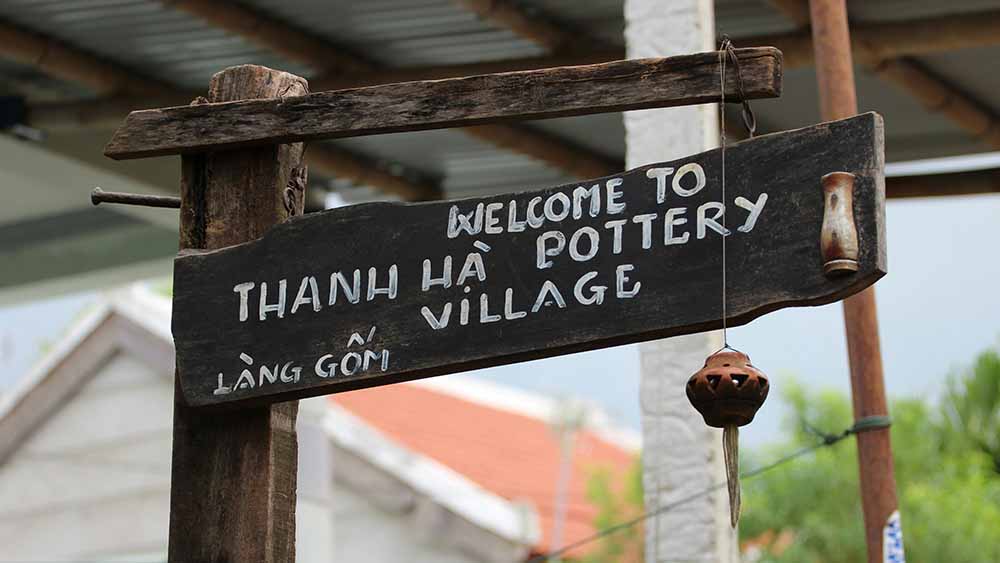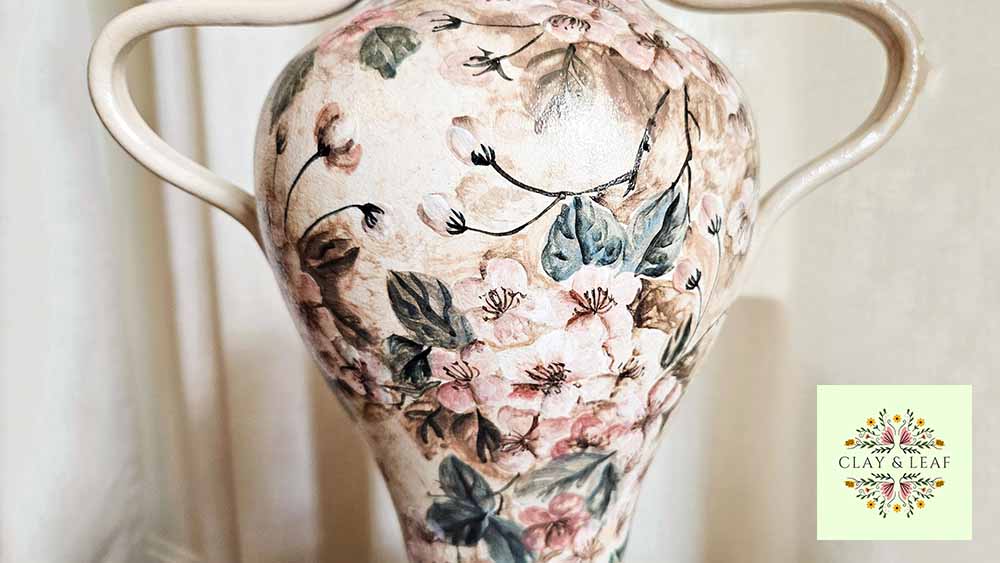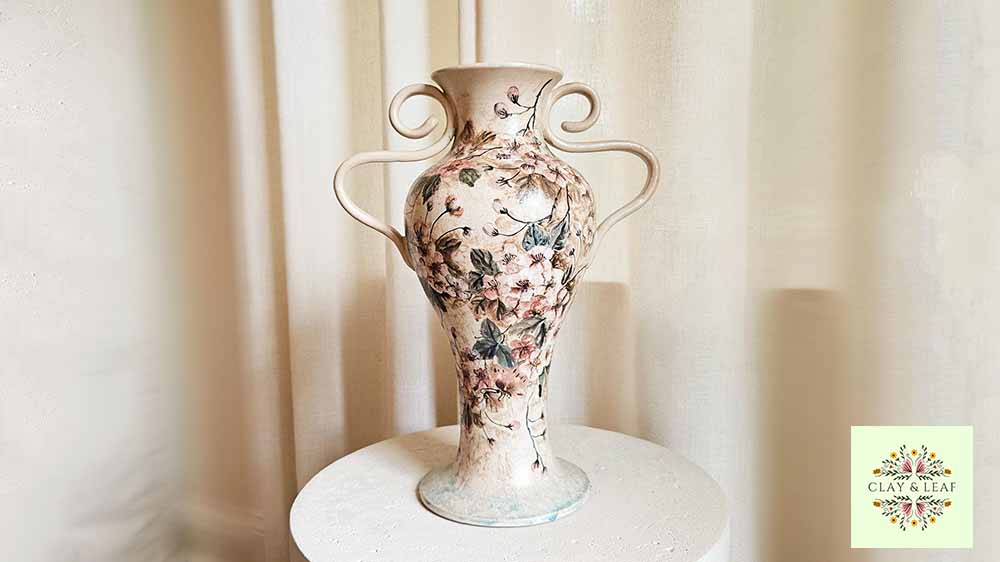Your cart is currently empty!

Thanh Ha Pottery Village: A Blend of Tradition and Artistry
I visited Thanh Ha Pottery Village last year and I’m so happy to share my journey with you. I’m Rita, and I’ve been lucky enough to see with my own eyes the amazing skills that have made this village famous. Let’s get into the history, the pottery, and where you can find them.
The History of Thanh Ha
Thanh Ha Pottery Village has a history as old as the clay the artisans work with. Back in the 15th century, the village’s story began when skilled potters from Thanh Hoa province were invited to move south by the Nguyen Lords to what is now Quang Nam province.
During my visit, I had the opportunity to speak with Mr. Nguyen, a local historian who shared fascinating details about the village’s past. He explained how Thanh Ha quickly became renowned for its high-quality ceramics, producing everything from everyday kitchenware to intricate roof tiles. What struck me most was learning about the village’s international reach – their pottery was so esteemed that it found its way to markets in Japan, China, and even as far as France, the United States, and Portugal.
As we walked through the village, Mr. Nguyen showed me centuries-old kilns, silent witnesses to generations of potters who have kept this art alive. It’s amazing how Thanh Ha has managed to preserve its tradition despite industrialization and market changes.
What’s special about Thanh Ha Pottery?
After observing the potters at work, it became clear why Thanh Ha ceramics stands out in today’s world of mass-produced pottery. The attention to detail and the use of time-honored techniques create pieces that are both functional and beautiful. Here are my notes from my visit:
The Magic of Thu Bon Clay
One of the most fascinating aspects of Thanh Ha pottery is the clay itself. Sourced from the nearby Thu Bon River, this clay has unique properties that contribute to the pottery’s distinctive quality. I had the chance to feel this clay in my hands, and its texture is very smooth and pliable.

What’s also interesting is the process the artisans use to prepare the clay. They age it, knead it, and treat it with care, just like a baker preparing a perfect loaf of bread. This attention to detail produces clay that’s perfect for making durable yet beautiful pottery.
Natural Colors and Unique Finishes
Another thing that sets Thanh Ha pottery apart is the color. Unlike many modern ceramics that use bright glazes, Thanh Ha pottery shows off the natural beauty of the clay. The pieces have earthy tones – warm reds, rich browns, and subtle yellows – that seem to capture the Vietnamese landscape.

I especially loved the burnishing technique used by the potters. Before firing, they polish the surface of each piece with a smooth stone. This process brings out the natural color of the clay and gives a subtle sheen that’s so beautiful.
Diverse Forms and Functions
While traditional forms like bowls and vases are still around, I was surprised by the variety of items made in Thanh Ha. From animal figurines to miniature buildings, the shapes and designs are amazing. It’s clear that the potters here are not afraid to be creative, combining traditional techniques with modern designs.
The Pottery Making Process: A Work of Love
I was lucky to see the whole pottery-making process from raw clay to finished product during my visit. It’s a long process that requires skill, patience, and artistry at every step. Here is what I observed:
- Clay Preparation: The process starts with clay extraction from the Thu Bon River. The clay is then aged for several months to develop its special properties. The potters then knead the clay to remove air bubbles and make sure the texture is consistent.
- Shaping: Using traditional pottery wheels or hand-building techniques, the artisans shape the clay into different forms. I watched in amazement as Mr. Tran, a master potter with 40 years of experience, turned a lump of clay into a beautiful vase in just a few minutes. “Each piece is me,” Mr. Tran said. “I put my soul into every curve and line. It’s not just about making pottery; it’s about preserving our heritage.”
- Decoration: Some pieces are decorated with intricate designs using special tools. These patterns are traditional Vietnamese or natural.
- Drying: The shaped pieces are left to dry in the open air for several days depending on the weather and the size of the piece.
- Burnishing: This step is crucial. The semi-dry pieces are polished with smooth stones to get that special sheen of Thanh Ha pottery.
- Firing: Finally, the pieces are fired in traditional kilns. The firing process takes up to 12 hours and the temperature reaches around 1000°C (1832°F).
Ms. Linh, a young potter who combines tradition with modernity, said, “We’re always trying new firing techniques to get different effects while still using our traditional methods.”
Cultural Significance in Vietnamese Tradition
Thanh Ha pottery has a special meaning in Vietnamese culture. Traditionally, these pieces were not just functional but also played a role in rituals and daily life.

“Our pottery is used in ancestor worship, wedding ceremonies, and even as part of the dowry,” said Mr. Nguyen, the local historian. “Each piece carries the spirit of our community and our history.”
In modern times, the ritualistic use has decreased but Thanh Ha pottery is still a symbol of Vietnamese craftsmanship and artistic heritage.
Where to Buy Authentic Thanh Ha Pottery
For those interested in acquiring pieces of Thanh Ha pottery, there are several options available:
Visit the Village
If you can, I highly recommend visiting Thanh Ha village yourself. It’s only 3 km from Hoi An and very easy to get to. You can see the potters at work, try your hand at the wheel, and buy directly from the artisans. During my visit, I found this to be a very enriching experience and I gained a deeper understanding of the craft.
Online Retailers
If you can’t visit in person, several online retailers sell authentic Thanh Ha pottery. One reliable option is Clay & Leaf (clayandleaf.com). They work directly with artisans in Thanh Ha so you can be sure of the authenticity of the products and support the local community. Their website has a wide range of pieces from traditional to modern designs.
Local Asian Markets and Specialty Stores
In larger cities, you may find Asian markets or home goods stores that carry Thanh Ha pottery. The selection may be limited but it’s a good option if you want to see and touch the pieces before buying.
Prices of Thanh Ha Pottery
Prices of Thanh Ha pottery vary greatly depending on the size, design, and age of the piece. Here’s a rough guide:
- Small decorative items (e.g. animal figurines): $5-$20
- Medium bowls or vases: $20-$50
- Large intricate pieces: $50-$200+
- Antique or rare pieces: Can be over $500
Remember, prices in the village are typically lower than in tourist shops or online retailers.
Best Time to Visit
Thanh Ha Village is open all year round but the best time to visit is during the dry season, from February to August. The weather is better for outdoor activities and pottery-making during these months.
If you want to see the village at its busiest, visit during the Lunar New Year (Tet) celebrations, usually in late January or early February. Many potters create special pieces for this occasion and you might see some cultural events.
Tips for Respectful Interaction
When visiting Thanh Ha Pottery Village, keep these tips in mind to ensure a respectful and enriching experience:
- Ask permission before taking photos, especially of the potters at work.
- If you try pottery making, listen carefully to instructions and be gentle with the materials.
- Bargaining is common but remember these artisans rely on their craft for a living. Bargain respectfully and be prepared to pay a fair price for good work.
- Learn a few basic Vietnamese phrases. Even a simple “xin chào” (hello) or “cảm ơn” (thank you) will do.
- Dress modestly if you plan to visit local temples or sacred sites.
- Buy directly from the artisans when you can.
The Future of Thanh Ha: Tradition and Innovation
Thanh Ha is looking to the future and faces the challenge of preserving its heritage while adapting to the modern market. During my visit, I met with several young potters who are working on this gap. This is what I learned:
Passing Down the Craft
One good sign is the effort to pass down the skills to the next generation. The village has set up workshops and classes to get young people involved in the pottery tradition. I attended one of the classes and it was great to see the young students learning from the master potters.
New Designs
While traditional forms are still popular, some artisans are trying new designs. I saw sleek, modern vases that would fit well in any modern home and still carry the soul of Thanh Ha’s craft. This old-meets-new seems to be attracting a new wave of pottery lovers.
Sustainable Practices
Another good sign is the trend towards sustainability. Some potters are experimenting with eco-friendly production methods, solar kilns, and organic glazes. This sustainable approach helps the environment and appeals to eco-conscious customers.
In summary, Thanh Ha Pottery Village is a beautiful mix of heritage and art. Whether you’re a serious collector or just love handmade beauty, Thanh Ha pottery has something for you. By visiting the village or buying from retailers like Clay & Leaf, we can keep this tradition alive in the 21st century.
As I left Thanh Ha, carrying carefully wrapped pottery pieces and a wealth of newfound knowledge, I couldn’t help but feel a deep appreciation for the skill, dedication, and creativity of its artisans. I hope that by sharing this experience, others will be inspired to explore and support this remarkable craft.
Rita

Leave a Reply